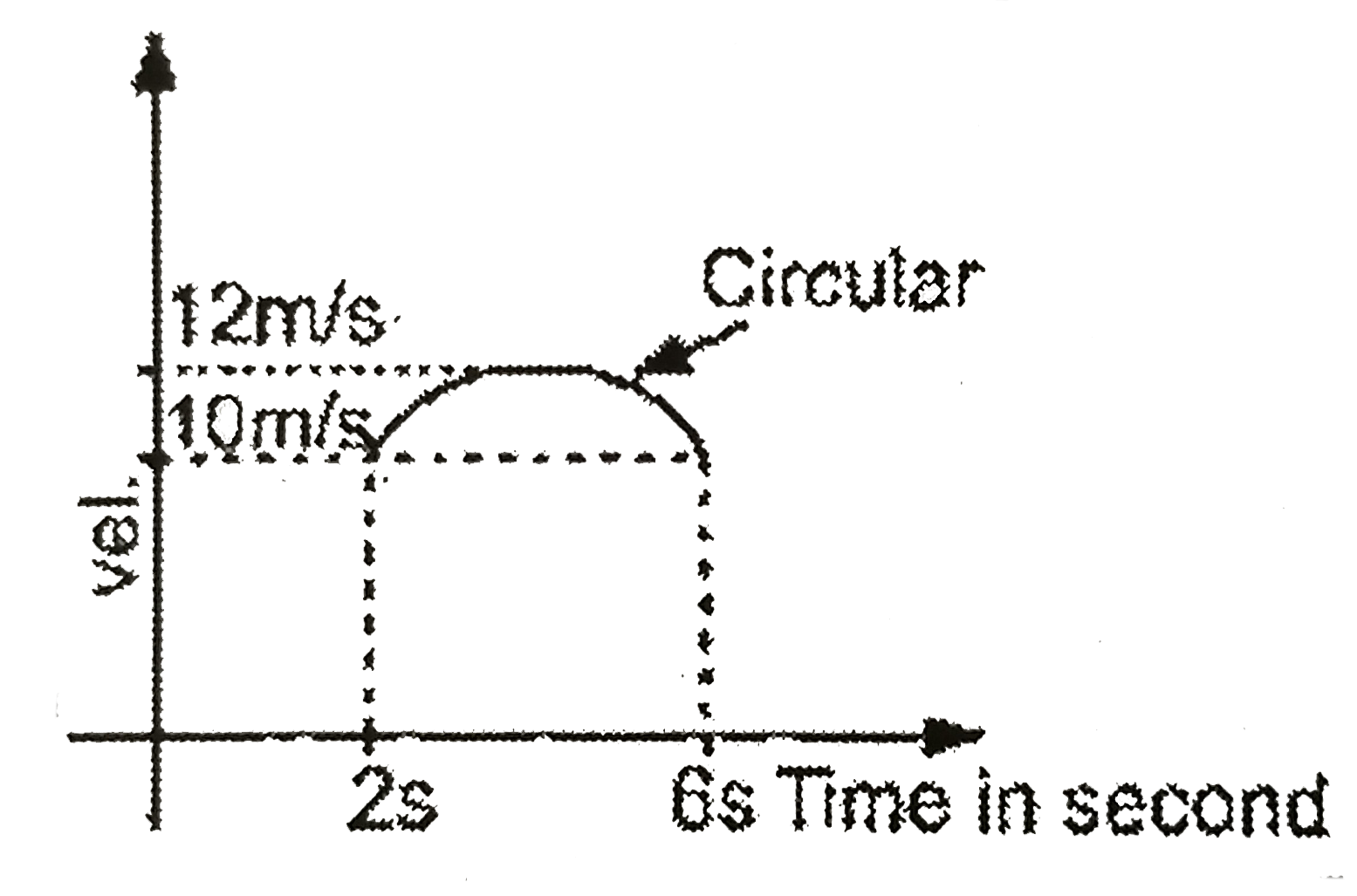If the velocity of a particle is v=At+Bt2, where A and B are constant, then the distance travelled by it between 1s and 2s is :
32A+4B
3A+7B
32A+73B
A2+B3
The correct Answer is:C
To find the distance travelled by a particle between 1 second and 2 seconds when its velocity is given by v=At+Bt2, we can follow these steps:
Step 1: Understand the relationship between velocity and distance
The velocity v is the derivative of the distance x with respect to time t:
v=dxdt
Given that v=At+Bt2, we can write:
dxdt=At+Bt2
Step 2: Integrate the velocity to find the distance
To find the distance x travelled between t=1 second and t=2 seconds, we need to integrate the velocity function with respect to time:
x=∫(At+Bt2)dt
Step 3: Perform the integration
The integral of At+Bt2 is:
x=∫(At+Bt2)dt=A2t2+B3t3+C
where C is the constant of integration. However, since we are interested in the distance travelled between two specific times, we can ignore C for now.
Step 4: Evaluate the definite integral from 1 to 2 seconds
We need to evaluate the distance from t=1 to t=2:
x(2)−x(1)=(A2(22)+B3(23))−(A2(12)+B3(13))
Calculating x(2):
x(2)=A2(4)+B3(8)=2A+8B3
Calculating x(1):
x(1)=A2(1)+B3(1)=A2+B3
Step 5: Subtract the two results
Now, we compute the distance travelled:
Distance=x(2)−x(1)=(2A+8B3)−(A2+B3)
Step 6: Simplify the expression
Combining the terms:
=2A−A2+8B3−B3
=(2A−A2)+(8B3−B3)
=(4A2−A2)+(8B−B3)
=3A2+7B3
Final Result
Thus, the distance travelled by the particle between 1 second and 2 seconds is:
Distance=3A2+7B3
The velocity v is the derivative of the distance x with respect to time t:
v=dxdt
Given that v=At+Bt2, we can write:
dxdt=At+Bt2
To find the distance x travelled between t=1 second and t=2 seconds, we need to integrate the velocity function with respect to time:
x=∫(At+Bt2)dt
The integral of At+Bt2 is:
x=∫(At+Bt2)dt=A2t2+B3t3+C
where C is the constant of integration. However, since we are interested in the distance travelled between two specific times, we can ignore C for now.
We need to evaluate the distance from t=1 to t=2:
x(2)−x(1)=(A2(22)+B3(23))−(A2(12)+B3(13))
x(2)=A2(4)+B3(8)=2A+8B3
x(1)=A2(1)+B3(1)=A2+B3
Now, we compute the distance travelled:
Distance=x(2)−x(1)=(2A+8B3)−(A2+B3)
Combining the terms:
=2A−A2+8B3−B3
=(2A−A2)+(8B3−B3)
=(4A2−A2)+(8B−B3)
=3A2+7B3
Thus, the distance travelled by the particle between 1 second and 2 seconds is:
Distance=3A2+7B3
Topper's Solved these Questions
- GENERAL KINEMATICS AND MOTION IN ONE DIMENSIONBOOK - A2ZCHAPTER - GENERAL KINEMATICS AND MOTION IN ONE DIMENSIONEXERCISE - AIIMS Questions
20 Videos
- GENERAL KINEMATICS AND MOTION IN ONE DIMENSIONBOOK - A2ZCHAPTER - GENERAL KINEMATICS AND MOTION IN ONE DIMENSIONEXERCISE - Chapter Test
30 Videos
- GENERAL KINEMATICS AND MOTION IN ONE DIMENSIONBOOK - A2ZCHAPTER - GENERAL KINEMATICS AND MOTION IN ONE DIMENSIONEXERCISE - Assertion Reasoning
20 Videos
- FLUID MECHANICSBOOK - A2ZCHAPTER - FLUID MECHANICSEXERCISE - Chapter Test
29 Videos
- GRAVITATIONBOOK - A2ZCHAPTER - GRAVITATIONEXERCISE - Chapter Test
29 Videos
Similar Questions
The instantaneous velocity of a particle moving in a straight line is given as v=αt+βt2, where α and β are constants. The distance travelled by the particle between 1s and 2s is :
View SolutionIf velocity of a particle is v=bs2 ,where b is constant and s is displacement. The acceleration of the particle as function of s is?
View Solution
Knowledge Check
If the velocity of a particle is v=At+Bt2, where A and B are constant, then the distance travelled by it between 1s and 2s is :
A32A+4BB3A+7BC32A+73BDA2+B3the velocity of a particle varies with time as shown below the distance travelled by the travelled by the particle during t=2s"and" t= 6s. Is
 A2πmB(2π+40)mC4πmD40m
A2πmB(2π+40)mC4πmD40m. If the velocity of a particle is (10 + 2 t 2) m/s , then the average acceleration of the particle between 2s and 5s is
A2m/s2B4m/s2C12m/s2D14m/s2
The momentum of a particle is P=A+Bt2 . Where , A and B are constant perpendicular vectors . The force acting on the particle when its acceleration is at 45∘ with its velocity is
View SolutionIf the velocity of a particle "v" as a function of time "t" is given by the equation,v=a(1-e^(-bt) ,where a and b are constants,then the dimension of the quantity a^2*b^3 will be
View SolutionThe position of a particle is given by
x=2(t−t2)
where t is expressed in seconds and x is in metre.
The total distance travelled by the paticle between t=0 to t=1s is
View SolutionThe velocity v of a particle at any instant t moving in a straight line is given by v=s +1 where s meter is the distance travelled in t second what is the time taken by the particle to cover a distacne of 9m ?
View SolutionThe displacement of a particle is s=(a+bt)6, where a and b are constants. Find acceleration of the particle as a function of time.
View Solution